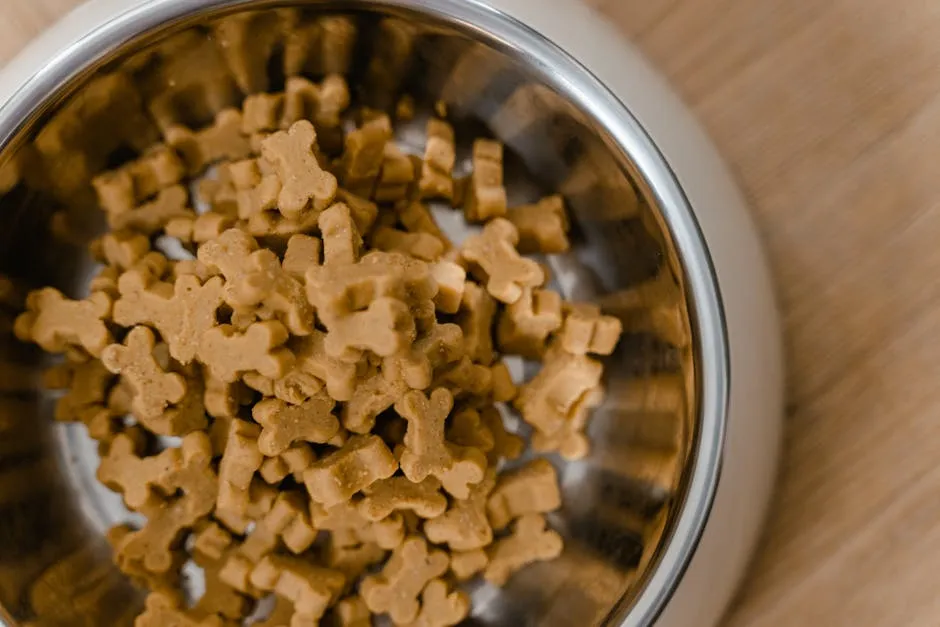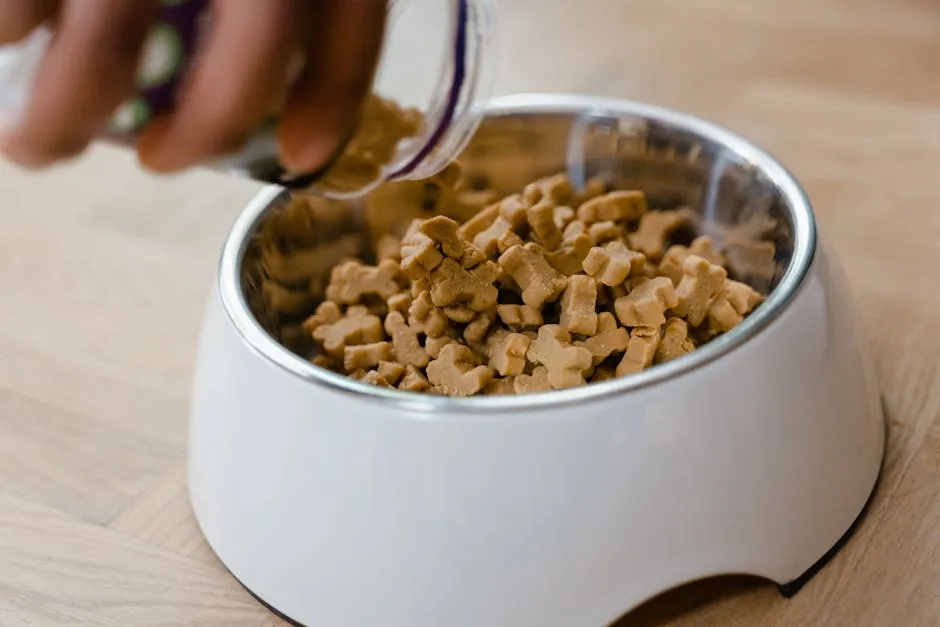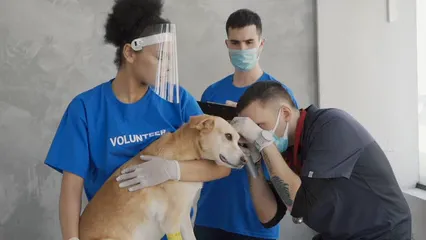Introduction
A species-appropriate diet is crucial for your pet’s health. It aligns with their natural dietary needs based on evolutionary history. Dogs and cats have specific nutritional requirements that, when met, promote their overall well-being and vitality.
Summary and Overview
A species-appropriate diet refers to the optimal nutrition tailored to the unique needs of each pet. For dogs, this means a diet rich in meat, organs, and bones, reflecting their carnivorous roots. Cats, as obligate carnivores, thrive on a diet high in animal protein, mimicking their natural prey.
In recent years, pet food trends have shifted from traditional kibble to species-appropriate diets. Many pet owners are realizing that commercial foods often lack the necessary nutrients. Feeding pets a diet that mirrors their natural eating habits leads to numerous health benefits. Improved digestion, a healthier coat, and increased energy levels are just a few advantages.
The rising popularity of raw and homemade diets presents exciting alternatives to processed pet food. These options offer more control over ingredients and nutritional balance, ensuring pets receive the nourishment they need. As more pet owners seek to provide species-appropriate meals, understanding their pets’ dietary needs becomes vital for promoting longevity and health.

The Importance of Species Appropriate Diets
Why It Matters
Understanding your pet’s evolutionary background is essential. Dogs and cats descended from wild ancestors that thrived on specific diets. For example, wolves primarily eat meat, organs, and bones. This diet matches their natural needs and provides essential nutrients.
However, modern pet foods often stray from these natural diets. Many commercial options are loaded with fillers and carbohydrates. These ingredients do not align with a carnivorous diet. The result? Pets may suffer from health issues like obesity, allergies, and digestive problems.
Inappropriate diets can lead to serious health concerns. Common issues include skin irritations, lethargy, and dental problems. By respecting the natural dietary needs of pets, we can promote their overall health and well-being.
Key Components of a Species Appropriate Diet
A species-appropriate diet includes vital components for optimal nutrition.
Protein Sources: High-quality meat, organs, and bones are essential. These provide the necessary amino acids for muscle growth and overall health. If you’re looking for a reliable source, consider checking out Premium Raw Dog Food that meets these criteria.
Carbohydrates: These should be minimal and sourced naturally. Dogs and cats do not require grains or high carbohydrate content. Instead, small amounts of fruits and vegetables can offer beneficial nutrients.
Fats and Hydration: Healthy fats support skin and coat health. Additionally, moisture in the diet is crucial, particularly for cats. A diet rich in moisture helps maintain hydration and supports kidney function.
Ensuring these elements in your pet’s diet is key to promoting a healthy, vibrant life. And if you’re looking for a great way to store their food, consider a Pet Food Storage Container to keep everything fresh!

Types of Species Appropriate Diets
Raw Diets
A raw diet consists mainly of uncooked meat, bones, and organs. This approach aligns closely with the natural eating habits of dogs and cats. By feeding raw, you’re providing high-quality proteins and essential nutrients that promote better health. Many pet owners report improved digestion, shinier coats, and increased energy levels after switching to raw.
However, safety is crucial. Raw food can carry pathogens like Salmonella or E. coli. To handle raw food safely, always wash your hands and sanitize surfaces after preparation. Store raw food in the freezer or refrigerator, and avoid cross-contamination with other foods. Gradually introduce raw meals to your pet’s diet to minimize gastrointestinal upset.
If you’re considering raw feeding but need some guidance, a Dog Food Recipe Book can help you navigate this new feeding journey!

Home-Cooked Meals
Preparing meals at home offers several benefits. You have full control over the ingredients, ensuring your pet gets fresh, high-quality food. Home-cooked meals can also cater to specific dietary needs. Many pet owners appreciate the peace of mind that comes with knowing exactly what’s in their pet’s food.
When cooking for your pet, it’s essential to include key nutrients for balance. Protein from meat is vital, but don’t forget healthy fats and carbohydrates. Include vegetables like carrots or peas for fiber and vitamins. Always consult a vet or a pet nutritionist to ensure you’re providing a balanced diet.
And while you’re whipping up those delicious meals, why not keep your kitchen tidy with a Silicone Pet Food Mat? It’s perfect for catching any stray kibble and spills!

Commercial Species Appropriate Diets
Commercial diets are increasingly popular due to their convenience. Many brands offer raw or gently cooked options that meet species-appropriate standards. These diets are pre-formulated to provide balanced nutrition without the hassle of meal prep.
When selecting a commercial diet, look for high-quality ingredients. The first ingredient should ideally be a named source of protein, like chicken or beef. Avoid products with fillers like corn or soy, as these can lead to health issues. Research and choose brands that prioritize transparency and quality in their ingredient sourcing.
For those who want to treat their pets in between meals, consider Natural Dog Biscuits that are both tasty and nutritious!

Kibble vs. Raw: A Comparison
Kibble has long been a staple in pet food, but how does it stack up against raw diets? The nutritional value of kibble often falls short. Many kibbles contain high levels of carbohydrates, which can lead to obesity and other health problems.
Raw diets, in contrast, provide higher digestibility and bioavailability of nutrients. Pets on raw diets generally experience better energy levels and improved digestion. However, kibble is more convenient and can be stored easily.
Ultimately, while kibble might be convenient, it lacks the benefits of a raw diet. If you’re considering a switch, consult your vet for guidance tailored to your pet’s specific needs.

Transitioning to a Species Appropriate Diet
Transitioning your pet to a species-appropriate diet can feel overwhelming. However, with a clear plan, you can make this process smooth and beneficial for your furry friend. A gradual change is crucial to avoid gastrointestinal upset.
Steps to Transition
1. Research: Understand the dietary needs of your pet. This will help you choose the right food.
2. Start Slow: Begin by mixing a small amount of the new food with your pet’s current diet. Aim for a ratio of 25% new food to 75% old food.
3. Increase Gradually: Over the next week, slowly increase the portion of the new food while decreasing the old food. Adjust the ratio to 50/50, then to 75% new food and 25% old food.
4. Monitor: Keep an eye on your pet’s reactions. Look for signs of digestive distress, like vomiting or diarrhea. If issues arise, slow down the transition.
5. Full Switch: After about two weeks, if all goes well, you can fully switch to the new diet.
This gradual approach helps your pet’s digestive system adjust to the new food without stress, and don’t forget to stock up on Pet First Aid Kit for any unexpected bumps along the way!

Common Challenges and Solutions
Picky eaters can be a challenge during this transition. If your pet refuses the new food, try mixing in some wet food or tasty toppers to encourage eating.
Another issue may arise from digestive problems. If your pet experiences upset stomach or diarrhea, revert to the previous food and take more time for the transition.
Lastly, allergies can pose a challenge. If you suspect your pet has food sensitivities, consult with your vet to explore alternative options. For more information on managing these allergies, check out understanding and managing dog food allergies.
If food allergies are a concern for your pet, it’s important to understand how to address them effectively. Understanding and managing dog food allergies can provide the necessary insights.

Nutritional Needs by Species
Dogs
Dogs are primarily carnivorous. Their anatomy reflects this, with sharp teeth designed for tearing flesh. They thrive on a diet rich in meat, organs, and bones, which provide essential nutrients.
Many misconceptions exist about dog diets. Some people believe dogs can thrive on a vegetarian diet. However, this is misleading. Dogs lack certain enzymes needed to digest plant material effectively.
Another myth is that all commercial foods are equal. In reality, many contain fillers and carbohydrates not suitable for dogs. These ingredients can lead to obesity and health issues.
Instead, focus on a diet high in quality animal protein. This includes meat, organ meats, and a small amount of vegetables. Fats are also important, providing energy and supporting skin health.
By aligning your dog’s diet with their natural needs, you can promote better health and vitality. If your dog experiences joint pain or arthritis, consider looking into best supplements for dogs with joint pain and arthritis.
If your dog is suffering from joint pain, it’s crucial to explore effective supplements. Check out the best supplements for dogs with joint pain and arthritis for more information.

Cats
Cats are obligate carnivores, meaning they must eat meat to survive. Unlike dogs, their bodies are designed to rely on animal proteins for essential nutrients. This unique status is driven by their evolutionary history as hunters, where they thrived on small prey such as mice.
Vital nutrients for feline health include taurine, an amino acid crucial for heart and eye health. Cats cannot produce enough taurine on their own, so it must come from their diet. Additionally, they require arachidonic acid, a fatty acid found in animal fat, and vitamin A from animal sources rather than plants. These nutrients support their active lifestyles and overall well-being.
For a treat that will make your cat purr, consider Freeze-Dried Raw Cat Treats which are packed with the goodness they crave!

Benefits of Species Appropriate Diets
Health Benefits
Feeding your pet a species-appropriate diet offers numerous health advantages. You’ll notice improved digestion and a shinier coat. Increased energy levels are often reported, making pets more playful and active. Moreover, these diets can significantly reduce the risk of obesity and related health issues such as diabetes and joint problems.
And speaking of health, keeping your pet hydrated is essential! A Pet Water Fountain can encourage your pet to drink more water, leading to better hydration!

Behavioral Improvements
Did you know that a pet’s diet can affect its behavior? Proper nutrition can lead to better mood stability and reduced anxiety. Pets on a species-appropriate diet often display calmer behaviors and less aggression. If you’ve noticed your furry friend being a bit more grumpy, a dietary shift might be just what they need.
To help with training and rewarding good behavior, don’t forget to stock up on Dog Training Treats that are perfect for positive reinforcement!

Conclusion
In summary, a species-appropriate diet is vital for your pet’s health and happiness. Understanding and catering to their natural dietary needs can lead to improved health outcomes and a happier life. Consider transitioning your pet to a more suitable diet for the best results, and explore the benefits that come with it.
FAQs
What is a species appropriate diet?
A species-appropriate diet aligns with your pet’s natural eating habits. For carnivorous pets like dogs and cats, this means a focus on high-quality animal proteins and minimal carbohydrates. Such diets are crucial for their health and longevity.
Can I feed my dog a vegetarian or vegan diet?
While some dogs may tolerate plant-based diets, they are not ideal. Dogs are primarily carnivores and require nutrients found mainly in animal products. If you’re considering this option, consult a veterinarian for the best alternatives.
How do I know if I’m choosing the right species appropriate food?
Look for high-quality ingredients. The first ingredient should be a named meat source. Avoid fillers like corn or soy. Check for nutritional adequacy statements and consider the brand’s reputation for quality.
Are raw diets safe for pets?
Yes, raw diets can be safe if handled correctly. Always source high-quality ingredients and practice safe food handling to minimize the risk of pathogens. Consult your vet for guidance on transitioning to a raw diet.
What are the signs my pet is not on a species appropriate diet?
Common signs include obesity, dull coat, digestive issues, and lethargy. If your pet shows any of these symptoms, it might be time to reassess their diet.
How can I transition my pet to a species appropriate diet?
Start by gradually mixing the new food with the current one. Aim for a slow transition over a week or two, adjusting based on your pet’s reactions. Monitor for any digestive upset and consult your vet if needed.
Please let us know what you think about our content by leaving a comment down below!
Thank you for reading till here 🙂
All images from Pexels





